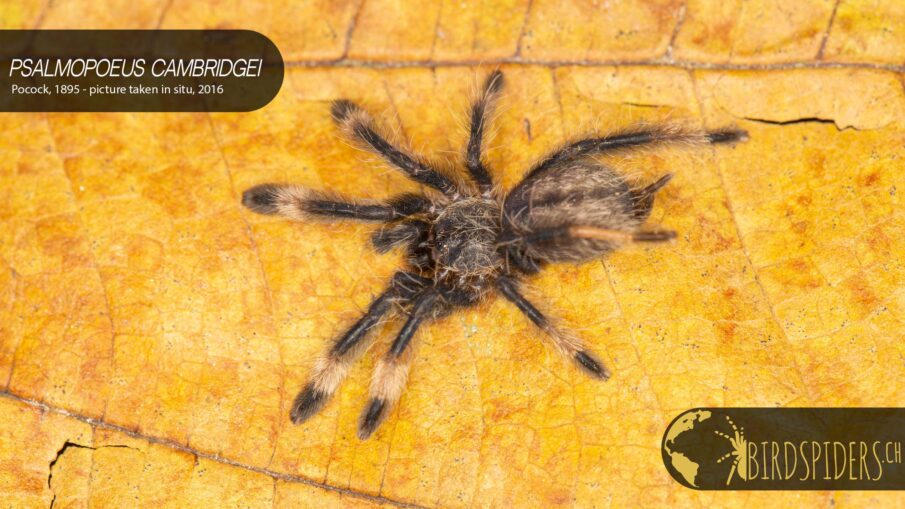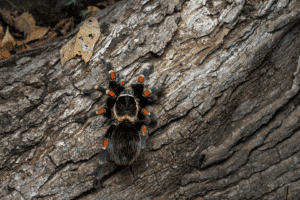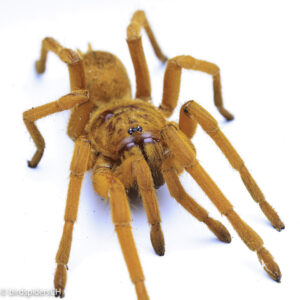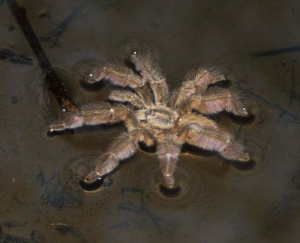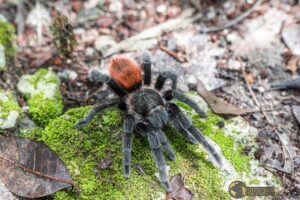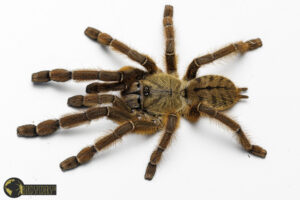The Chevron Tarantula, Psalmopoeus cambridgei, is found in the primary lowland rainforests of the “Northern Range” mountain chain in Trinidad. These extend north from west, Chaguaramas Peninsula, to east, Toco, and are at a maximum of 900 meters above sea level. Temperatures are relatively similar throughout the year. Between 28 and 32°C, although the temperature in the mountains will certainly be a bit lower. Between December and May there is a dry season, although the relative humidity is still around 75%.
The Chevron Tarantula, Psalmopoeus cambridgei, looks for hiding places in tree crevices, pieces of bark and other structure in trees. Also ruins or house roofs are converted as a shelter, thus one can call this species also a culture follower. P. cambridgei has no urticating hairs, as with other members from the subfamily Psalmopoeinae (except Ephebopus spp.)
During our fieldtrip to the archipelago of Trinidad we successfully encountered various different specimens of the Trinidad Chevron Tarantula in all sizes. As expected, we found big adult specimens of Psalmopoeus cambridgei in huge trees reaching easily 12 meters in height. The tarantula itself was at an altitude around 3 meters – impossible for us to get close to it.
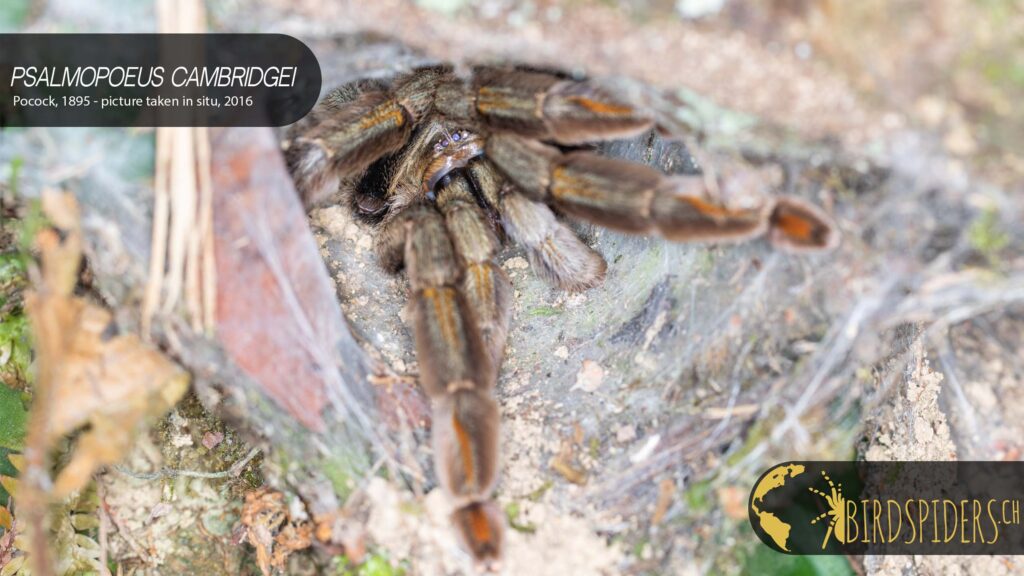
On another instance we found the tarantula inhabiting man made shelters – like in this picture, a metal pipe right next to a bamboo forest. The abundance of this tarantula species was very high and made our trip outstanding.
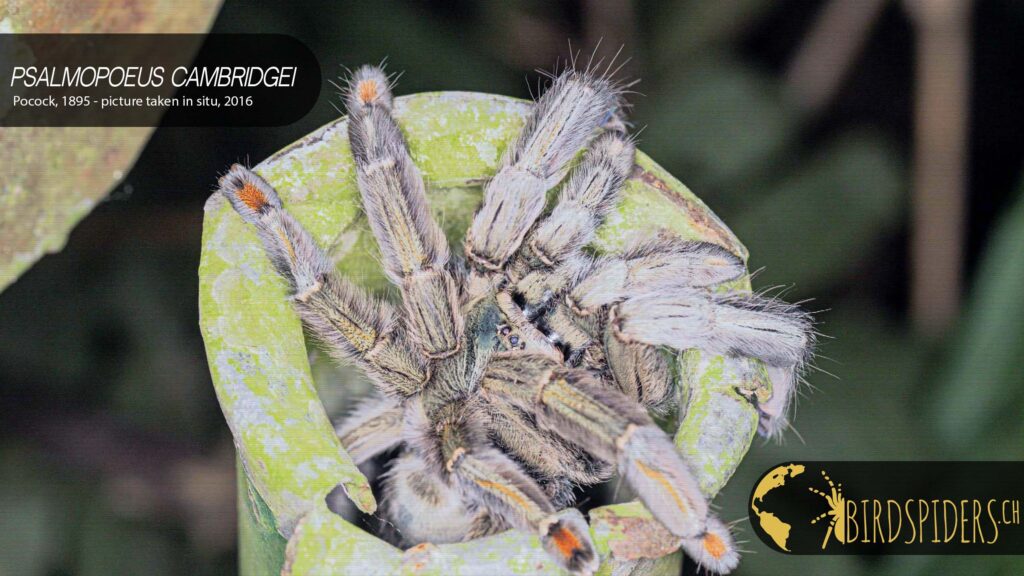
The Trinidad Chevron Tarantula
Smaller specimens, freshly hatched and still bearing the colors of the young were found webbed up in leafs just as in the Pink Toe Tarantulas – Avicularia tarantulas. The light coloration of the metarasus is something to be blown away by and truly makes us whish that they would keep that coloration in adults as well.
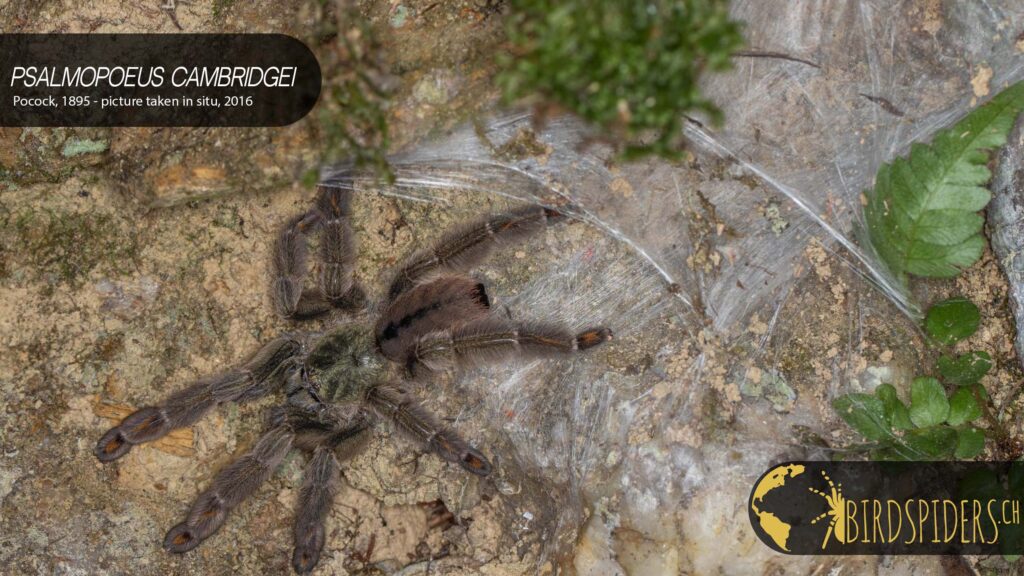
To our surprise we found a Trinidad Chevron tarantula on a road side embankment living in soil. Wiithout any tree in sight. This tarantula burrowed itself into the ground and used its ability to web a nice and cozy home. Tremendous find and something to write about. Psalmopoeus are known to be very oppurtinistic and in instances like these, don’t even rely on trees to live in.
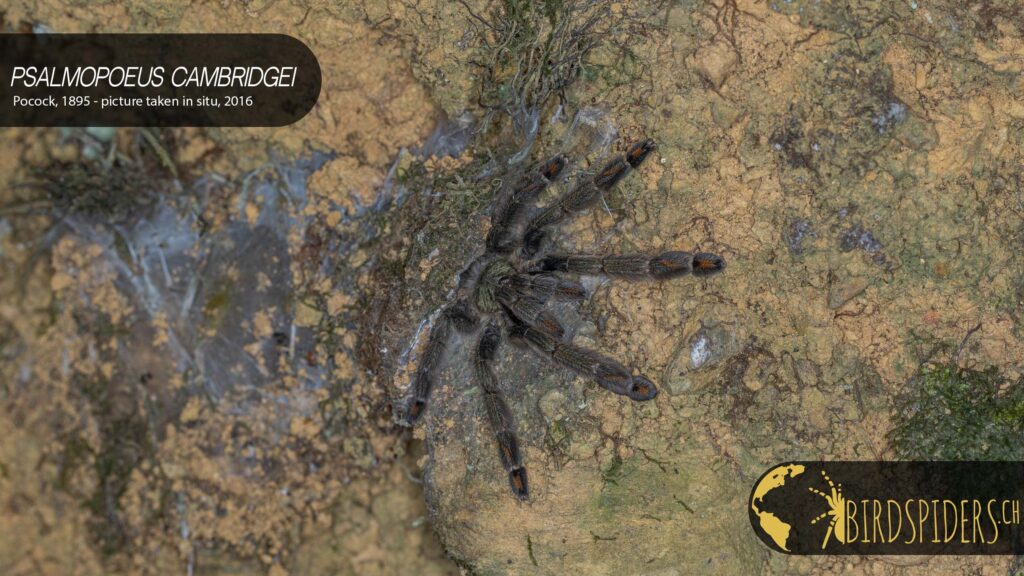
Learn more about our fieldtrip to Trinidad by watching this media slide show presentation of our best pictures and stories from the expedition. Use this link and check out the part of the Trinidad Chevron at around min 16:00 https://www.youtube.com/watch?v=aQLLgr_3PaA
In captivity, mating is relatively easy, which is also the reason for the rather frequent offspring and availability in the arachnoculture. After a successful mating often two or even three cocoons are produced without a second copulation, whereby the latter ones contain correspondingly fewer young. Eggsack sizes (own determination) of up to 200 pieces are to be expected with the first cocoon. Another 50-150 can develop, with a second cocoon, after about 6-8 weeks of timing. The rearing is very easy. Once the animals are separated in high containers, they thrive magnificently. With sufficient feeding and warmth, males reach the adult stage after about 1.5 years and females after about 2 years.
